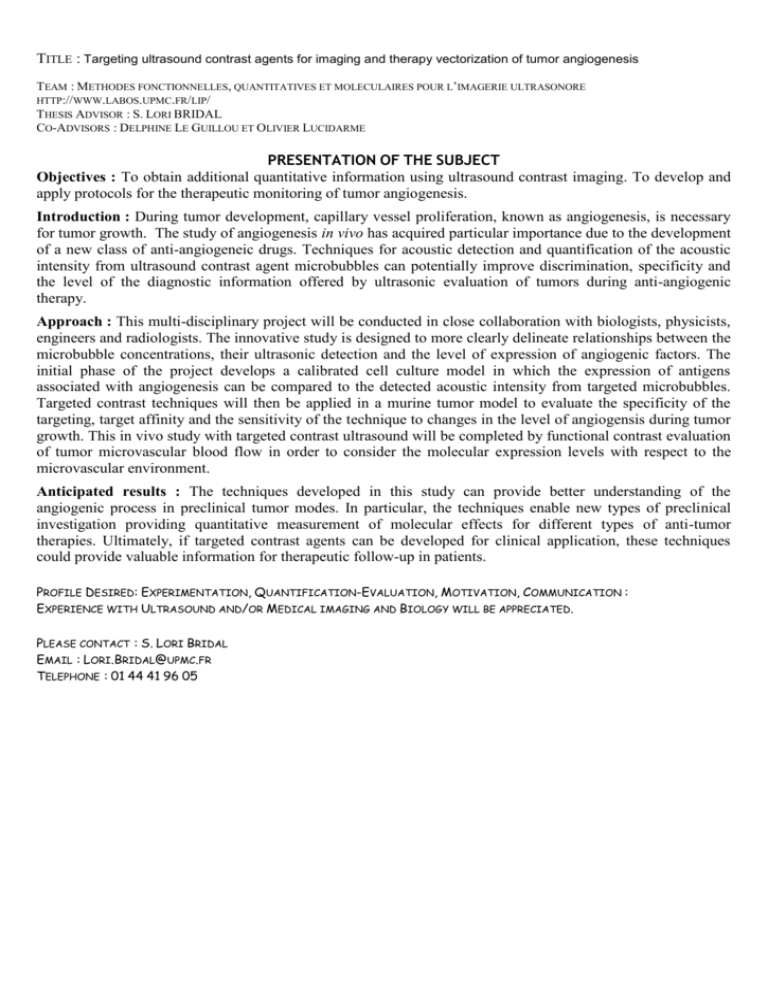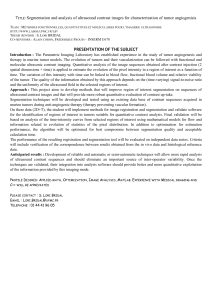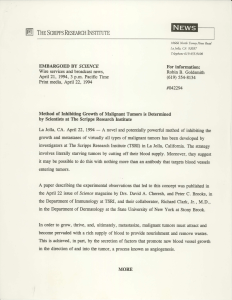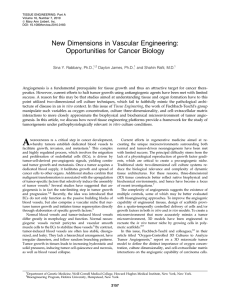proposition de sujet de thèse
advertisement

TITLE : Targeting ultrasound contrast agents for imaging and therapy vectorization of tumor angiogenesis TEAM : METHODES FONCTIONNELLES, QUANTITATIVES ET MOLECULAIRES POUR L’IMAGERIE ULTRASONORE HTTP://WWW.LABOS.UPMC.FR/LIP/ THESIS ADVISOR : S. LORI BRIDAL CO-ADVISORS : DELPHINE LE GUILLOU ET OLIVIER LUCIDARME PRESENTATION OF THE SUBJECT Objectives : To obtain additional quantitative information using ultrasound contrast imaging. To develop and apply protocols for the therapeutic monitoring of tumor angiogenesis. Introduction : During tumor development, capillary vessel proliferation, known as angiogenesis, is necessary for tumor growth. The study of angiogenesis in vivo has acquired particular importance due to the development of a new class of anti-angiogeneic drugs. Techniques for acoustic detection and quantification of the acoustic intensity from ultrasound contrast agent microbubbles can potentially improve discrimination, specificity and the level of the diagnostic information offered by ultrasonic evaluation of tumors during anti-angiogenic therapy. Approach : This multi-disciplinary project will be conducted in close collaboration with biologists, physicists, engineers and radiologists. The innovative study is designed to more clearly delineate relationships between the microbubble concentrations, their ultrasonic detection and the level of expression of angiogenic factors. The initial phase of the project develops a calibrated cell culture model in which the expression of antigens associated with angiogenesis can be compared to the detected acoustic intensity from targeted microbubbles. Targeted contrast techniques will then be applied in a murine tumor model to evaluate the specificity of the targeting, target affinity and the sensitivity of the technique to changes in the level of angiogensis during tumor growth. This in vivo study with targeted contrast ultrasound will be completed by functional contrast evaluation of tumor microvascular blood flow in order to consider the molecular expression levels with respect to the microvascular environment. Anticipated results : The techniques developed in this study can provide better understanding of the angiogenic process in preclinical tumor modes. In particular, the techniques enable new types of preclinical investigation providing quantitative measurement of molecular effects for different types of anti-tumor therapies. Ultimately, if targeted contrast agents can be developed for clinical application, these techniques could provide valuable information for therapeutic follow-up in patients. PROFILE DESIRED: EXPERIMENTATION, QUANTIFICATION-EVALUATION, MOTIVATION, COMMUNICATION : EXPERIENCE WITH ULTRASOUND AND/OR MEDICAL IMAGING AND BIOLOGY WILL BE APPRECIATED. PLEASE CONTACT : S. LORI BRIDAL EMAIL : LORI.BRIDAL@UPMC.FR TELEPHONE : 01 44 41 96 05











